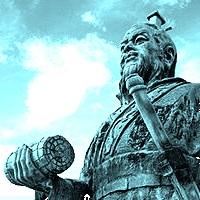
The Art of Doing Nothing, Part Three
In part two of this article, I described how I came up with a weird looking, but nevertheless efficient, plan of treating an unpleasant middlegame in my game vs. Hikaru Nakamura. For in-depth analyzation of the study-like endgame in this encounter, you can read my articles It's a Miracle, Part Three and Computers in Chess... Good or Evil? Part Three.
I had expected to treat this game as a strange aberration, a once per life time event... but sometimes life is stranger than fiction! The very next round I found myself playing GM Boris Gulko. He is a very strong, experienced opponent who I knew well since we'd played a match for the U.S. title in 1999. Something went wrong with my home preparation because the position I got after the opening looked pretty disgusting.
If you are not sure why I call Black's position disgusting, compare it to the following classical game which certainly belongs to the proverbial category: "every Russian schoolboy knows it." Therefore, I didn't have any doubt that GM Gulko knew it as well!
Here is how Alekhine describes his winning plan in this position:
- Attack the weak c6 pawn with Ne5, Nb4 and Be4 which will force Black to trade his precious knight on f8 - leaving the key h7 square unprotected.
- Using a battery on the diagonal b1-h7, force Black to play g7-g6 and create a target for an attack.
- Push the h-pawn to open files and start a direct attack against the Black king.

Now enjoy Alekhine's artistic implementation of the above mentioned plan:
Now back to my game. My position has the same inferior strategic features: a hopelessly bad light-squared bishop, a lack of space, and no counterplay. But at least I don't have those weak pawns on the queenside that Lajos Asztalos created for himself with his "active" pawn moves. So what should I do when I have no plan and any "active" pawn move will only create new weaknesses?
“If your enemy is secure at all points, be prepared for him. If he is superior in strength, evade him. If your opponent is temperamental, seek to irritate him."
- Sun Tzu
Black's position is very solid (look at the powerful knight on d5), and even though I cannot play any active moves for now, I am well prepared for any possible attack. So, my goal at the moment is simply to do nothing and irritate my opponent as recommended by the great commander!
This time it was much easier for me to make this decision since I already tasted the "forbidden fruit" of doing nothing in the previous round:
Now compare this position to the one seven moves later:
You could see that Alekhine's plan of a kingside attack didn't work very well in this game since I could use my knight to help in my defense. The reason I could keep my knight is because I didn't have to trade it in order to protect my non-existant weaknesses! The reason I had no weaknesses was because I didn't push any pawns or, in fact, do anything at all! In the final position, White has absolutely no way to break Black's fortress.
So, I was able to save the second difficult position in a row against a strong opponent. Had I found the panacea for all chess problems?
We'll discuss it in the final installment of this article...
RELATED STUDY MATERIAL
- Check out Part One and Part Two of this series;
- Watch another Alekhine masterpiece in GM Mackenzie Molner's The Blumenfeld Gambit Part 1: An Attacker's Guide!;
- Find your zen warrior in Chess Mentor;
- Become a tactical machine with our Tactics Trainer;
- Looking for articles with deeper analysis? Try our magazine: The Master's Bulletin.



